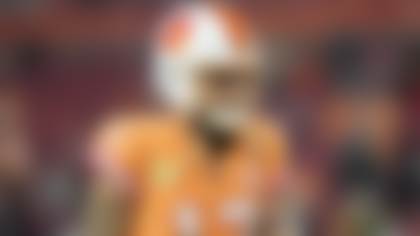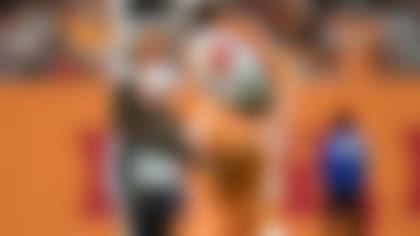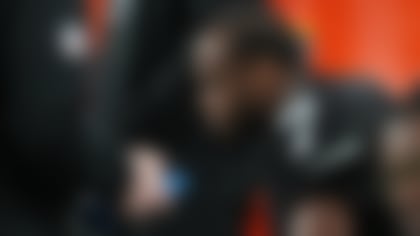In Week 2, the New England Patriots beat the New York Jets in the Meadowlands, 19-10. It was a hard-fought, field-position-is-everything, kind of game. The kind of game where the team playing safe, smart and fundamentally sound usually comes out on top. In a manner of speaking, it was not a Brett Favre kind of game.
Anatomy of a Play
More Anatomy of a Play:
»
**Paving the way for Peterson**
The stats were virtually identical:
When two teams are that evenly matched, mistakes are magnified, and the Jets made two that arguably cost them the game.
One was Jay Feely's missed 31-yard field goal on New York's 11-play opening drive.
The other was Favre's third-quarter interception. It was the game's only turnover, and it gave the Patriots a short field, leading directly to their only touchdown.
In this week's Anatomy, we went back to the Patriots' and Jets' first matchup to preview their Thursday night showdown on NFL Network. We chose two plays from a critical time in the third quarter, when the Patriots took control of the game.
One play was Brandon Meriweather's interception of Favre. The second came three plays later, on third-and-9, when Kevin Faulk took a screen pass from Matt Cassel and gained 22 yards.
Favre's interception was classic Favre. On second-and-24, he could have thrown a checkdown for 10 yards to set up a manageable third down, or he could have taken a shot at picking up the first down in one big chunk. It's not hard to guess which option he chose.
The route combination was designed to high/low Meriweather, the safety. A high/low route combination means one receiver runs a short route and another runs a deep route, attacking a defender at different levels.
Chris Baker ran a corner route behind Meriweather, and Bubba Franks ran a quick flat route in front of him. Meriweather, being a Bill Belichick student, played the situation properly and got decent depth on his drop. That tightened the deeper window to Baker.
Again, it was second-and-24. If Favre took the safe play to Franks, the Jets likely would have picked up between 10-15 yards and given themselves a chance on third down. That would have been the smart play.
Favre chose to make the tougher throw to Baker, and the pass fluttered short, into the hands of Meriweather. That kind of mistake is bad in any game, but in a 6-3 game in which your defense is playing great? Huge mistake.
During the broadcast, Phil Simms took Favre off the hook by blaming left tackle D'Brickashaw Ferguson for getting pushed back into Favre. Favre couldn't step into the throw, because Ferguson was in his lap. True. But if Favre had thrown the ball to Franks, Ferguson's protection would not have come into question.
Three plays after the future Hall-of-Famer was intercepted, first-time-starter Matt Cassel executed a third-and-9 screen pass beautifully, and Faulk carried the ball inside the 10. The Patriots scored a touchdown on the drive to increase their lead to 13-3.
The two plays summarized the game and what might transpire again on Thursday night:
» If Favre is patient and takes what the defense gives him, he'll protect the ball, his defense, his offensive line and himself.
» Matt Cassel is still in his infant stages as an NFL passer, and the Jets can expect more screens, draws and quick passes. After all, why would New England do anything risky with Cassel, knowing Favre is one gunslinger moment away from giving the Patriots free points?



